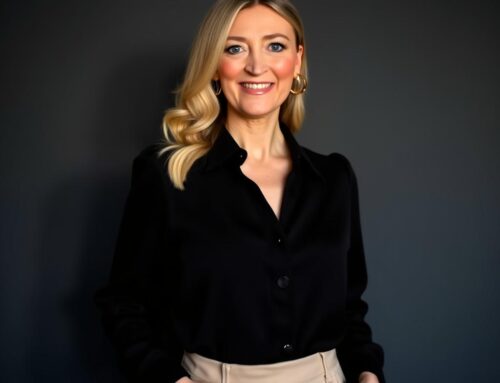Managing Partner Katie McCann analyses the challenges and considerations of dividing unique and rare assets during high net worth divorces.
Katie’s article was published in Family Law Journal, 14 February 2023 and can be read here, and in the February 2023 print edition of Family Law.
During the Summer there was a really interesting case that came out in the United States about a couple that where in the midst of a difficult divorce and they were arguing about the ownership of a “Jackson Pollock” collage. He was once arguably hailed as one of the greatest painters in America. In the recent judgement in Collardeau – Fuchs v Fuchs (Rev 1) [2022] EWFC 135, Mostyn J dealt at considerable length with how the parties should treat their works of art. There was also the Macklowe collection that was subject to an order for sale in the US to help settle a divorce to the tune of 600 million dollars.
It is rare, however that we as family practitioners have cases where there are rare and unique assets, but it does occur.
Such assets tend to present themselves as prestigious and expensive pieces of artwork, rare collector’s pieces, cars, and unique and expensive jewellery.
There are a number of ways that such assets can play a part in cases.
Initial Identification and Valuation:
Items such as those listed above can come to light during the process of disclosure by way of exchange of Forms E.
Generally at the First Directions Appointment, questions are raised in the traditional way via a questionnaire and then directions may be given for a valuation to take place.
The problem arises, however, when faced with unusual assets, regarding what questions should be asked in the first place to make sure that as much information about said asset is gathered and nothing is overlooked.
What follows is a practical tour through some of the types of topics that can be covered and questions that can be raised when practically faced with unusual assets and chattels in a dispute.
- Always ask for the insurance certificate/policies and any schedules to such policies. Sometimes items are insured on household policies.
- Sometimes items are not listed individually on a policy but an “inventory” was given to the insurance company. This can be asked for.
- Always ask for any current valuations or valuations undertaken in the last few years.
- Sometimes parties hold valuable and unique items in storage; ask for a copy of any contract with a storage company, sometimes payments for storage companies can be picked up from bank statements which may reveal information that items are in fact being stored. And again, if items are in storage always ask for a copy of the full inventory and any changes in the same within a defined period of time.
- Of course if anything has been sold, always ask for obvious details of the same with documentary evidence to support the same.
- Sometimes very valuable items are in a safe deposit box in a bank. Always ask about the location, full details of the bank involved, a full inventory of the box and as above a full breakdown of any changes to the inventory over whatever defined period of time is in question.
- For jewellery, always ask for any current valuations. If those are not made available ask for the items to be made available upon request for inspection and valuation.
Standard letters of instruction can be used when approaching a professional to value an unusual asset and as set out above, it may be that unique arrangements have to be made for a piece to be made available for viewing. As it may be that suitable professionals who can value a certain rare piece of art may be few and far between and may in fact be located in another jurisdiction, sometimes a piece may have to be transported to a professional for viewing or the professional may have to be brought in from abroad and the costs of that will need to be factored in.
When identifying a professional to arrange a valuation, that will often depend on the specific item in question. Auction houses such as Sotheby’s have specialised departments that can help when a couple have very unusual and unique items and collections as they offer particularly bespoke and confidential appraisals. Confidentiality often being a huge factor in these cases, where an item is of particular worth and significance.
The identity of the expert can be as unique as the item itself, but ensuring that the right professional is instructed is crucial.
What litigation can arise around these items and how does the court deal with it?
Often in cases where there is considerable wealth or assets are unique and rare as set out above, parties can be drawn into litigation surrounding them, especially if a large proportion of the couples’ wealth, is for example, invested in a portfolio of prestigious art.
This was the case in the recent matter of Collardeau – Fuchs v Fuchs (Rev 1) [2022] EWFC 135. The husband was 62 and a very influential property developer and owner of the Chrysler Building in New York. The Wife was 47. She was a former journalist but left that career in the early days of the relationship. They married on 14th April 2012 and separated in March 2020 at the start of the pandemic. They had two children together aged 6 and 4.
The Husband was a self proclaimed billionaire. The schedule attached to the parties pre nuptial agreement had his wealth at just over one billion and during the proceedings this was edging up to almost 2 billion.
The parties had a pre nuptial agreement that was subsequently modified. The issue was not necessarily how binding that was, but each other’s interpretation of the same.
The parties had a significant art collection and this actually formed a considerable area of dispute for them.
There was considerable issue about how much of that collection was indeed joint and how that should be dealt with. There were 45 items of art on the schedule and all where in the Husband’s sole name. Most of those items were agreed to be shared but the Husband was claiming that eight belonged solely to him.
At para 83 of the judgement a rather interesting segment of cross examination of the husband is set out:
Under cross-examination there was this exchange between the husband and Mr Cusworth KC:
“A. …There is no “we”. There is never any emails from Alvina where she basically express ownership in any of these pieces. So … you can’t just go around and ask for ownership, because you’re going with somebody in a store, in a gallery and buy a piece of art and you say, “I like it”. I mean this is where I feel the cost element of this — I feel it is abusive, because it’s against common sense. Either you own it or you don’t own it. At least a point where you say: I have ownership of this art.
- What happened to the first 34 items on the list then, Mr Fuchs? Why are they, as you accept, jointly owned?
- Because I gave them to her and I was saying that to her.
- You gave them to her?
- Yes.
- As gifts?
- No, as where we bought them together and we have consents, but I feel I’m acting here a little bit like a hungry crocodile. The more you offer and the more you give, the more you are asking.
- Forgive me, Mr Fuchs, your art portfolio in 2019 was worth £29 million, wasn’t it, very valuable, and these are only tiny pieces around the edge; yes?
- Yes.
- So we are not talking about somebody biting your arm off to grab large chunks of your portfolio. We are talking about a few pieces that she says she was particularly interested in and bought with you and discussed with you while you were married?
- Yes, and this.”
Mostyn J ruled that all the pieces in the collection should be jointly owned and there was no evidence to suggest why the remaining pieces should be treated any differently to the agreed joint pieces.
It is clear that the court here viewed this collection as just a small overall piece of the huge jigsaw puzzle that was the matrimonial pot in this case. These few additional pieces were simply folded into the mix and dealt with in a proportionate manner to the rest of the issues in the case.
When the pot in question Is large enough, and it generally is, when we have rare assets of this kind, the court will usually take a proportionate and sensible view on how to approach the exercise of division in line with an overall balancing exercise.
Interestingly in this case also there was an argument about 300,000 euros worth of alleged stolen jewellery. In a case where this was a substantial portion of the of the overall asset base, I am certain the court would have given it more weight as an issue for consideration, but here Mostyn disregarded it altogether. He said that it had nothing whatsoever to do with the amended pre nuptial agreement that everyone was arguing about, but the pertinent point is that it is likely it was so de minimis in relation to the overall value of the assets in dispute, that it was not worthy of consideration and further dispute.
The seeming overall principle therefore in cases such as this which involve unique and rare assets is that, as in all matrimonial cases, the court will deal with the asset proportionately, in relation to the overall pot.
The court can order distribution of the asset, i.e that one of the parties has it on their side of the balance sheet; it can order its sale and distribution of the funds accordingly. It can order that one party keeps said asset but that a lump sum must be paid to the other side to offset its value or a proportion of the same. This has become much easier in recent times with the rise of organisations willing to allow finance to be raised against such rare and unique items.
What would happen if an unscrupulous litigant had sold such an item, or it had disappeared for the purposes of defeating a parties claim?
If such a unique and rare item is sold for a fair price and the money can be located and identified, it is enough simply to accept the value on the relevant section of the balance sheet before applying thought as to distribution.
But if one party was acutely aware of the existence of said item, its value was relevant to the overall value of the matrimonial pot, and it has simply disappeared with no evidence of it’s whereabouts, sale etc, then an attempt at an “add back” argument could be raised. For an add back argument to be successful then the applicant must show that there has been reckless or wanton spending or dissipation. Subject to section 25(2)(g) of the Matrimonial Causes Act 1973, the court must be satisfied that this is financial misconduct that it would be inequitable to disregard. So for example if a jewellery collection that made up a sizable proportion of the matrimonial pot, was sold and the monies dissipated then it would be inequitable for the court to simply put this to one side.
Examples of reckless and wanton spending can be said to be drug or alcohol abuse; expensive lifestyle attributed to a new relationship higher than that of the marriage; gifts made out of the ordinary; luxury purchases, speculative investments.
However in N v F [2011] EWHC 586 (Fam) it was held that if “defeat” of the matrimonial claim was the real aim in the dissipation then an application via s37 of the Matrimonial Causes Act 1973 might be the more appropriate method to reverse the transaction if possible. Of course it might not always be as easy to reverse a transaction pertaining to a rare and unique item that might not have the same regulated transactional history such as the sale of a property.
Whilst altogether rare, cases that involve assets as set out above do crop up from time to time, especially when dealing with families that reach a particular level of wealth. In any event they serve to keep the family lawyers involved on their proverbial toes.
Katie McCann is the founder and Managing Partner of Lowry Legal, a specialist family law firm. She has acted for a range of high-net-worth clients including public figures, celebrities and business owners.
Request a Callback
Leave a few details below and one of our team will be in touch to discuss how we can support you with your legal needs. Please note that we cannot offer Legal aid.












